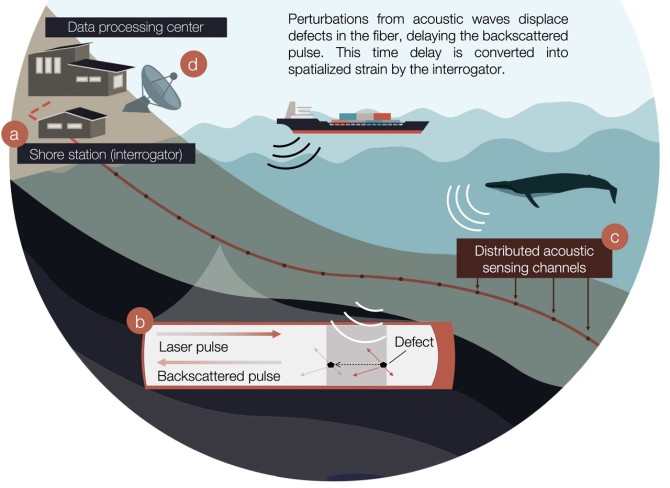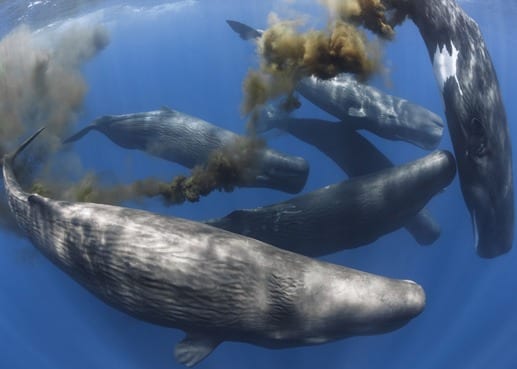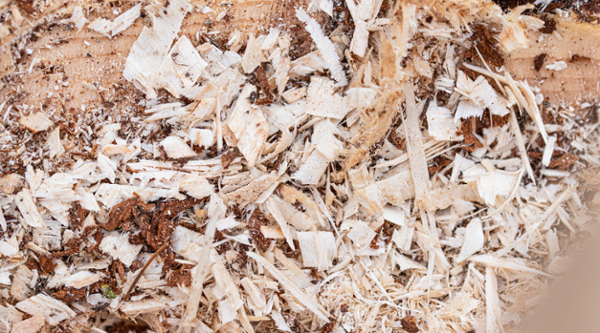
Credit:Marte Finsmyr and Léa Bouffaut.
The illustration shows how DAS works. An interrogator (a) sends a laser pulse from a ground station through the fiber optic cable.The cable has defects (b) which underwater sounds slightly displace.This sends back a signal that the interrogator can interpret as acoustic data over regularly spaced intervals or channels (c).
Existing fiber-optic cables can monitor whales
A new study demonstrates for the first time that the same undersea fiber-optic cables used for internet and cable television can be repurposed to tune in to marine life at unprecedented scales, potentially transforming critical conservation efforts.
“Eavesdropping at the Speed of Light: Distributed Acoustic Sensing of Baleen Whales in the Arctic,” was published July 5 in Frontiers in Marine Science. It describes tracking whales using optic fiber and a technique called Distributed Acoustic Sensing (DAS).
“Sound travels five times faster in the ocean than in the air,” said Léa Bouffaut, a postdoctoral researcher at the K. Lisa Yang Center for Conservation Bioacoustics at the Cornell Lab of Ornithology, and first author of the study. “Because whales are highly vocal, acoustic monitoring is a very effective way for us to assess where they are located and where they are going.”
Putting that detailed information into the hands of conservationists and decision-makers could have a significant impact. Nearly 50% of great whale species are classified as endangered. They face challenges including warming oceans and increasing human maritime activities that negatively affect their environment and their ability to communicate.
Bouffaut completed the study with collaborators while she was at the Norwegian University for Science and Technology. She and the Yang Center team will now advance DAS research in two main areas: quality assessment of the audio signals received, and artificial intelligence software to sift through the massive DAS acoustic output, which can add up to many terabytes of data daily.
Traditional acoustic whale monitoring methods involve the deployment of an array of hydrophones to detect sound waves in a specific area. According to Bouffaut, because of the comparatively high costs associated with the operation (instruments, ship time and crew for deployment and recovery), acoustic data remains sparse and the oceans unevenly sampled.
By using fiber optics, scientists could have access to many more sensors over longer distances, enabling them to better monitor whales in real time.
“The technology behind DAS is totally different compared with monitoring sound waves directly with an underwater microphone,” said Yang Center director Holger Klinck. “What we are recording are changes in the timing of light pulses that are back-scattered by small defects in the fiber-optic cable. We can then convert that signal into sound. That’s why we call them ‘virtual’ hydrophones.”
The monitoring would employ one of the unused spare fibers, also called “dark fiber,” that is typically included with telecommunications cable bundles. These dark fibers can be tapped without disturbing existing data streams at the end point of the cable on shore.
“My hope is to further develop this technology and make it available for all those involved in marine conservation,” Bouffaut said. “This technology could make the future much brighter for whales.”
Original Article: Existing fiber-optic cables can monitor whales
More from: Cornell University | Norwegian University for Science and Technology
The Latest Updates from Bing News & Google News
Go deeper with Bing News on:
Monitoring whales
- Scientists see rare Rice's whales near Texas for the first time in 7 years
During an aerial survey on April 11, scientists with the National Oceanic and Atmospheric Association's (NOAA) Fisheries division observed two endangered Rice's whales swimming in the western Gulf of ...
- Gray Whale Likely Killed by Vessel Strike Near Alameda, Necropsy Suggests
A necropsy suggests a gray whale found off Alameda died from a vessel strike, with scientists gathering data for ongoing research.
- Gray whale recovered near Alameda beach likely suffered deadly encounter with ship
A gray whale found floating off Alameda earlier this month likely died from blunt force trauma from a vessel strike, according to a necropsy report done by scientists at the California Academy of ...
- This Is What Whales Are Betting On Broadcom
Delving into the details, we found 23% of traders were bullish, while 44% showed bearish tendencies. Out of all the trades we spotted, 18 were puts, with a value of $1,012,593, and 16 were calls, ...
- Five whales have died along NC’s coast this year. Here’s what researchers know so far.
Whales stranded along the NC coast in recent years have died from parasites, disease and most often, experts say, as a result of human interactions.
Go deeper with Google Headlines on:
Monitoring whales
[google_news title=”” keyword=”monitoring whales” num_posts=”5″ blurb_length=”0″ show_thumb=”left”]
Go deeper with Bing News on:
Virtual hydrophones
- The Best Things to Do on San Juan Island in Washington State
The center has VR (Virtual Reality) Whale Watching ... The Whale Museum also has a live stream and two hydrophones that detect and record ocean sounds next to the lighthouse at Lime Kiln State Park so ...
Go deeper with Google Headlines on:
Virtual hydrophones
[google_news title=”” keyword=”virtual hydrophones” num_posts=”5″ blurb_length=”0″ show_thumb=”left”]










